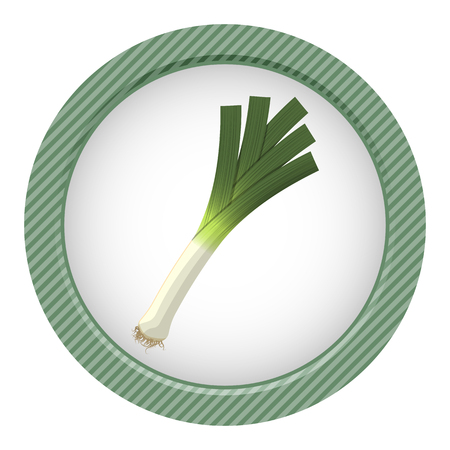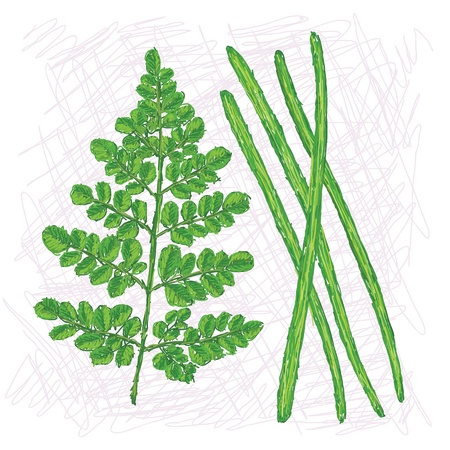Introduction to Coastal Foraging in the UK
The rugged coastlines of the United Kingdom have long been a source of inspiration, nourishment, and adventure. Coastal foraging—the practice of gathering wild foods from beaches, rock pools, and tidal zones—has deep roots in British history, woven into the fabric of seaside communities. Today, this time-honoured tradition is experiencing a gentle revival, as more people seek to reconnect with nature and rediscover the simple joys of harvesting wild edibles by the sea. From briny seaweeds to delicate shoreline plants, the British shores offer a rich larder waiting to be explored. Whether you are an experienced forager or a curious beginner, coastal foraging provides a wonderful opportunity to slow down, breathe in the fresh sea air, and enjoy the bounty that nature has to offer—all while treading lightly on these precious habitats. With a mindful approach and an eye towards sustainability, coastal foraging invites us to savour the natural flavours of the UK’s diverse coastline and celebrate the enduring bond between people and place.
Identifying Edible Seaweeds
Exploring the UK’s coastal landscapes offers a treasure trove of edible seaweeds, each with unique flavours and nutritional benefits. Recognising these varieties is the first step towards a safe and rewarding foraging experience. Among the most popular and accessible are dulse, laver, and bladderwrack. Below is a gentle introduction to identifying these seaweeds, along with practical advice for responsible harvesting.
Dulse (Palmaria palmata)
Dulse is easily recognised by its deep reddish-purple colour and soft, leathery texture. It usually grows attached to rocks in the mid to lower shore and can be enjoyed raw, dried, or lightly cooked. Its mild, slightly salty flavour makes it a favourite addition to soups, salads, or even as a savoury snack.
Laver (Porphyra spp.)
Laver boasts delicate, sheet-like fronds that range from dark green to blackish purple. This seaweed is famously used in Welsh laverbread, a local delicacy. It thrives on sheltered rocky shores and should be gathered when the tide is low. Once collected, rinse thoroughly to remove sand and grit before cooking.
Bladderwrack (Fucus vesiculosus)
Easily identified by its olive-green hue and distinctive air-filled bladders along the fronds, bladderwrack has a crisp texture when fresh. Found on rocky shorelines throughout the UK, it’s valued for its mineral content and can be gently simmered into broths or used as a base for stocks.
| Seaweed | Key Features | Common Uses |
|---|---|---|
| Dulse | Reddish-purple colour; soft texture | Soups, salads, snacks |
| Laver | Dark green/black sheets; delicate fronds | Laverbread, sauces |
| Bladderwrack | Olive-green; air bladders present | Broths, stocks |
Sustainable Harvesting Tips
To ensure the continued health of our coastline ecosystems, always forage mindfully. Only take what you need, leave plenty behind for wildlife and regrowth, and use scissors or a sharp knife to trim seaweed above the holdfast rather than pulling it up entirely. Avoid foraging in polluted areas or near busy harbours where water quality may be compromised. By following these simple guidelines, you’ll help preserve these edible wonders for future generations while enjoying their natural goodness today.

3. Shoreline Plants: Hidden Edible Gems
Along the rugged British coastline, a surprising array of edible shoreline plants flourish, quietly waiting to be discovered by the mindful forager. These coastal greens offer not only vibrant flavours but also a direct connection to the natural landscape. Among the most cherished finds are sea purslane, samphire, and wild garlic—each with its own unique character and culinary appeal.
Sea Purslane
Sea purslane (Atriplex portulacoides) is a resilient plant found along saltmarshes and tidal estuaries. Its small, succulent leaves have a pleasantly salty tang, making them a delightful addition to salads or as a garnish for fish dishes. You’ll often spot it growing in dense mats where the land meets the tide. When harvesting, take only what you need and pinch off just the tender tops to allow the plant to thrive.
Samphire
Samphire (Salicornia europaea), sometimes called “sea asparagus,” is one of the UK’s best-loved coastal treats. It thrives in muddy creeks and salt marshes, especially along the North Norfolk coast and Welsh estuaries. Crisp and juicy, samphire can be enjoyed raw, lightly steamed, or tossed in a pan with butter. Pick carefully, snipping above the root so that new shoots can continue to grow for seasons to come.
Wild Garlic
Wild garlic (Allium ursinum), known locally as ramsons, carpets woodland edges and shaded coastal banks in springtime with its lush green leaves and starry white flowers. Its mild garlicky flavour brightens pestos, soups, and savoury bakes. Foragers should gather only the leaves—not roots or bulbs—and always leave plenty behind to ensure healthy regrowth and support local pollinators.
Responsible Foraging Tips
When exploring for these edible gems, it’s vital to forage responsibly. Always identify plants with certainty—some lookalikes can be harmful. Stick to public rights of way or obtain permission on private land, and avoid areas exposed to pollution or heavy foot traffic. Take small amounts from plentiful patches, leaving enough for wildlife and future growth. By treading lightly and harvesting mindfully, you’ll help preserve these coastal treasures for generations while adding fresh vitality to your kitchen.
4. Sustainable Harvesting Practices
Foraging along the UK’s picturesque coastline is not only a delightful way to connect with nature, but it also comes with a responsibility to preserve these special environments for future generations. Practising sustainable harvesting is crucial to maintaining the delicate balance of coastal ecosystems, ensuring that seaweeds and shoreline plants continue to thrive.
Legal Considerations
Before you set out, it’s essential to familiarise yourself with local laws and regulations regarding foraging. In the UK, certain areas are protected by law, such as Sites of Special Scientific Interest (SSSIs) and Marine Conservation Zones (MCZs), where collecting any natural resource may be restricted or prohibited. Always check with local councils or Natural England for up-to-date guidance.
| Area Type | Permission Required? | Notes |
|---|---|---|
| Public Beaches | Usually No* | *Some councils may have by-laws; always check signage or council websites. |
| Private Land | Yes | Seek landowner’s permission before foraging. |
| Protected Sites (SSSI/MCZ) | Often Restricted | Special permissions needed; often off-limits for harvesting. |
Foraging Etiquette
Caring for our coastlines starts with thoughtful behaviour. Only take what you need, and never harvest entire patches—leave plenty behind for wildlife and regrowth. Use a small, sharp knife or scissors rather than pulling plants up by the roots, which helps ensure continued growth. It’s best to spread your gathering over a wide area rather than focusing on one spot, minimising your impact on any single location.
The Importance of Leaving No Trace
The principle of ‘leave no trace’ is vital when coastal foraging. Be sure to remove all rubbish, avoid trampling delicate habitats like sand dunes and salt marshes, and replace rocks or seaweed gently if you move them during your search. Respect all wildlife and other people enjoying the shore—your actions help ensure everyone can experience the beauty of Britain’s coasts.
Sustainable Foraging Checklist
- Check local regulations before you forage.
- Harvest sparingly and selectively—never deplete an area.
- Use proper tools and avoid uprooting plants.
- Avoid protected areas unless you have permission.
- Leave no litter and restore disturbed sites as best you can.
- Respect wildlife and other foragers at all times.
Sustainable coastal foraging in the UK is about enjoying nature’s wild bounty while caring deeply for its continued health. By following these practices, you’ll help protect our unique seashores so they remain vibrant, diverse, and welcoming for years to come.
5. Simple Recipes and Culinary Inspiration
Bringing your foraged treasures into the kitchen is a delightful way to celebrate both the land and sea, creating dishes that are nourishing, flavourful, and deeply rooted in British tradition. Many coastal plants and seaweeds have long been part of local diets, offering a natural boost of vitamins and minerals while showcasing the subtle tastes of the shoreline.
Classic British Dishes with a Coastal Twist
Incorporating wild finds into traditional recipes is simple yet rewarding. For example, add finely chopped sea lettuce or dulse to homemade soda bread for an earthy, savoury note reminiscent of old Cornish kitchens. Blanching young samphire and stirring it through buttery mashed potatoes makes for a vibrant side dish that pairs beautifully with grilled fish or roast chicken.
Nutritious Soups and Stews
Hearty soups are a staple in British homes, especially during chillier months. Try simmering bladderwrack or kelp with root vegetables and pearl barley for a wholesome broth brimming with minerals from the sea. Adding a handful of wild garlic leaves towards the end of cooking imparts a gentle, aromatic lift, bringing freshness to every spoonful.
Fresh Salads and Simple Sautés
For lighter fare, toss together rock samphire, sea purslane, and young sea beet leaves with new potatoes, olive oil, and lemon juice for a refreshing salad inspired by coastal picnics. Alternatively, gently sautéed laver or dulse can be stirred through scrambled eggs or served atop sourdough toast for a nourishing breakfast or light supper—simple food that lets natural flavours shine.
By weaving these wild ingredients into familiar dishes, you not only enjoy unique tastes but also reconnect with the rhythms of nature and traditional British foodways. Let your coastal harvest inspire meals that are honest, wholesome, and full of character—true nourishment from the shore to your table.
6. Seasonal Foraging Tips
Foraging along the UK’s coastline is a delightful way to connect with nature, but timing your trips with the seasons is essential for both abundance and sustainability. Here’s a gentle guide to what’s in season, so you can enjoy the freshest wild foods while caring for coastal habitats.
Spring: The First Coastal Greens
As winter fades, the shorelines come alive with new growth. Look out for tender sea purslane and samphire shoots along salt marshes and tidal flats. Early spring is also an excellent time to gather dulse and young bladderwrack seaweeds, which are at their most tender and full of nutrients. Remember to take only what you need, leaving plenty behind for regrowth and wildlife.
Summer: Peak Abundance
Summer brings a vibrant variety of edible coastal plants and seaweeds. Sea beet leaves are lush and plentiful, perfect for tossing into salads or lightly steaming. Rock samphire thrives on rocky cliffs, offering its aromatic leaves for a zesty addition to dishes. Kelp species like sugar kelp reach their peak now—harvest fronds sustainably by cutting above the holdfast to allow regrowth. Always check local guidelines before collecting, as some areas may be protected during breeding seasons.
Autumn: Rich Flavours and Seeds
The cooler days of autumn signal a shift in coastal flora. Sea buckthorn berries ripen into vibrant orange clusters along sandy dunes—rich in vitamin C and ideal for homemade syrups or jams. Marsh samphire begins to toughen but can still be harvested before it becomes woody. Sea lettuce continues to flourish in rock pools, providing a soft, mineral-rich leaf for soups or garnishes.
Winter: Hardy Harvests
While the colder months bring quieter shores, there are still treasures to be found. Certain seaweeds such as laver (used in traditional Welsh laverbread) remain available throughout winter, though they grow more slowly. Hardy shoreline greens like scurvy grass may be found in sheltered spots; their peppery flavour adds a lively kick to winter dishes. Take extra care when foraging in winter weather—coastal paths can be slippery and tides unpredictable.
A Few Words on Responsible Foraging
No matter the season, always forage mindfully: use a sharp knife or scissors rather than pulling up plants by the root, avoid over-harvesting from any one spot, and respect local wildlife and fellow beachgoers. By tuning into nature’s rhythms and harvesting only what’s needed, you’ll help protect the delicate balance of these unique coastal ecosystems—ensuring bountiful wild foods for years to come.


